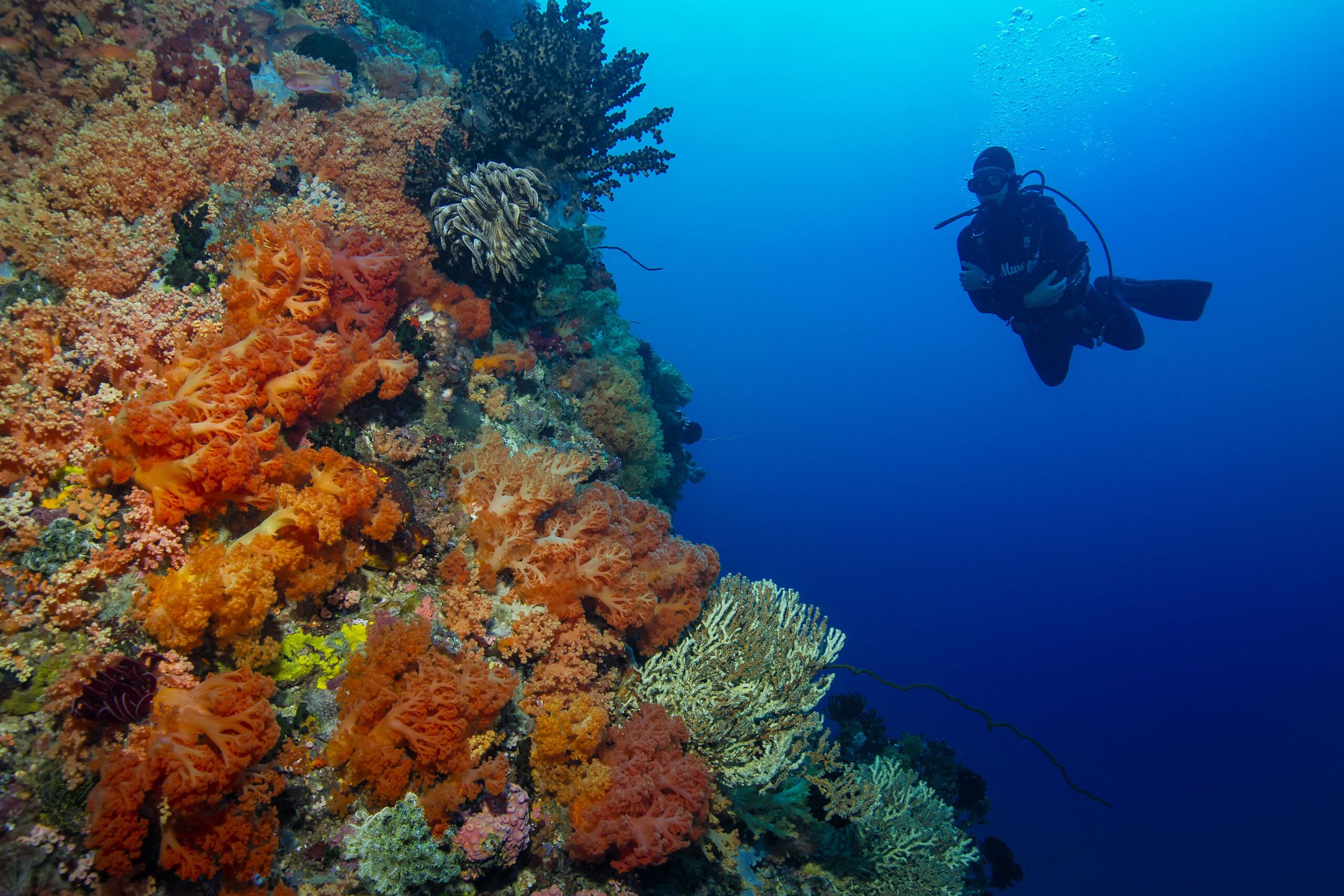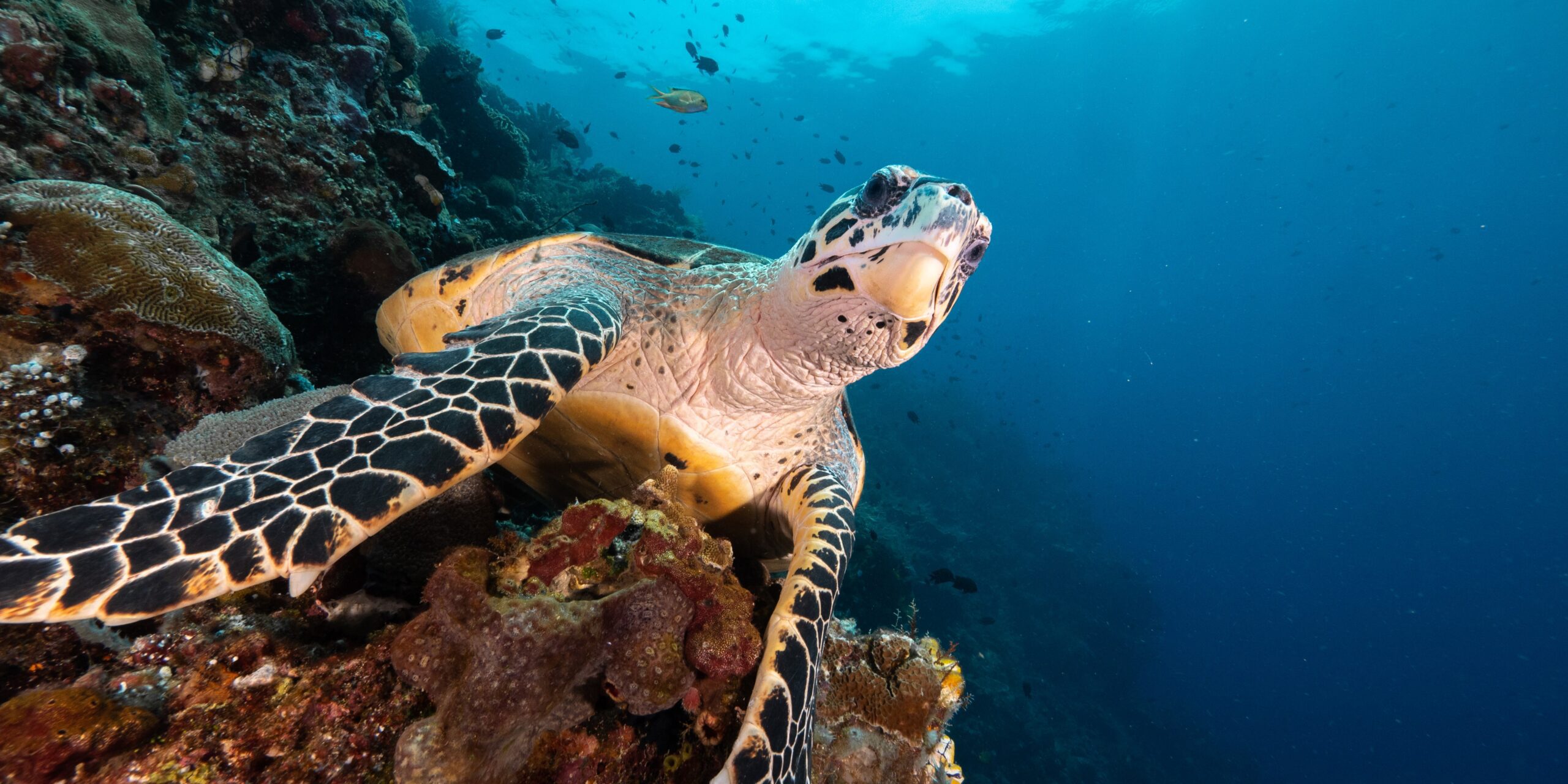
10 Things You Never Knew About Hawksbill Turtles
Here in North Sulawesi, we are exceptionally fortunate to have two species of sea turtle that we see regularly – the green sea turtle and the hawksbill turtle. While we have 5 out of the 7 species of sea turtles that exist worldwide, these are the 2 species we see most often.

Green turtle (left) vs hawksbill turtle (right). Note the difference in the shell and the hawksbill’s “beak”
10 Things about Hawksbill Turtles
How much do you know about hawksbill turtles? Did you know that their name comes from their bird-like beak? Do you know how to distinguish a hawksbill turtle from a green sea turtle? Read on to find out more about these amazing marine creatures
1. Distinguishing features: Beaks and bird-like eyes
Hawksbill turtles (Eretmochelys imbricata) are most easily identified by their “beaks” but they also have other distinguishing characteristics. A green sea turtle has a clean shell whereas a hawksbill turtle’s shell often gathers algae growth and appears mottled. Green sea turtles have a round eye whereas hawksbill turtles have a more oval, bird-like eye.
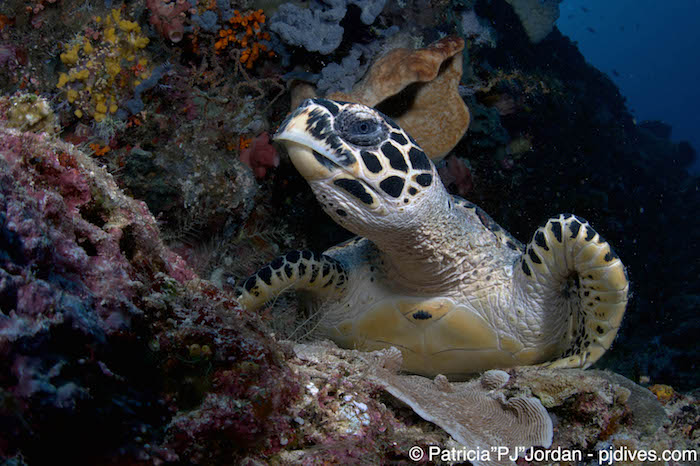
A hawksbill has a unique, bird-like beak
2. Small size and fast swimmers
Hawksbill turtles are one of the smallest species of sea turtles. An adult hawksbill can weigh from 45kg to 90kg whereas an adult green sea turtle can weigh up to 160kg – up to three times the weight. The hawksbill’s smaller size means that it is the fastest swimmer of all turtle species.
3. Females’ nesting habits and egg count
Adult females are well adapted for crawling over reefs and rocky areas to reach secluded nesting sites. On average hawksbills nest roughly 4 times per season at 2 week intervals and lay around 140 eggs per nest. Nests however, may contain over 200 eggs.
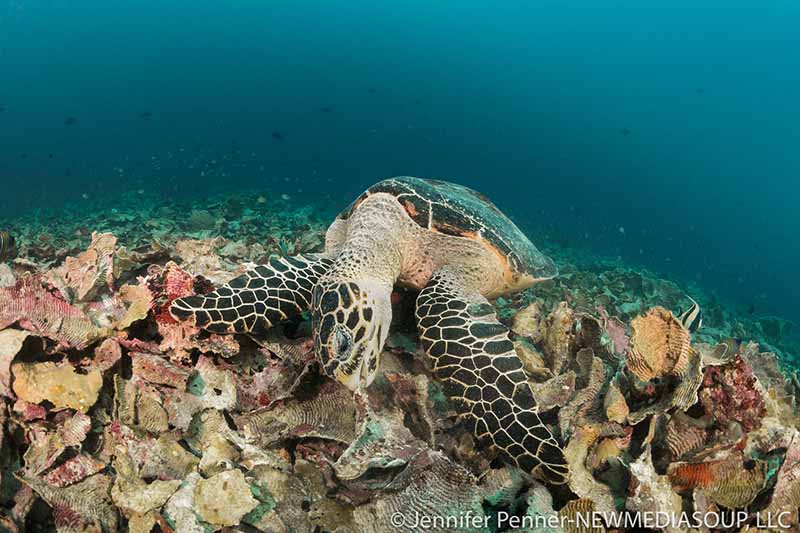
Hawksbills are adept at foraging among the reef
4. Importance of hawksbills in coral reef ecosystems
Hawksbills feed mainly on coral reef sponges. Their narrow heads and bird-like beaks allow them to forage into nooks and crevices on the reef. Did you know that hawksbills are important inhabitants of coral reefs?
By consuming sponges they play an important role in the reef community, aiding corals in growth. It’s estimated that one turtle can consume over 1,000 pounds of sponges per year. Without hawksbill turtles, sponges would have the ability to overgrow corals and suffocate reefs.
Sponges are toxic to most other marine species due to the spicules (glass-like spines) they contain, the hawksbill turtle is immune to these. Hawksbill turtles will also feed on soft corals if they are readily available.
5. Baby turtles’ emergence and beach attraction
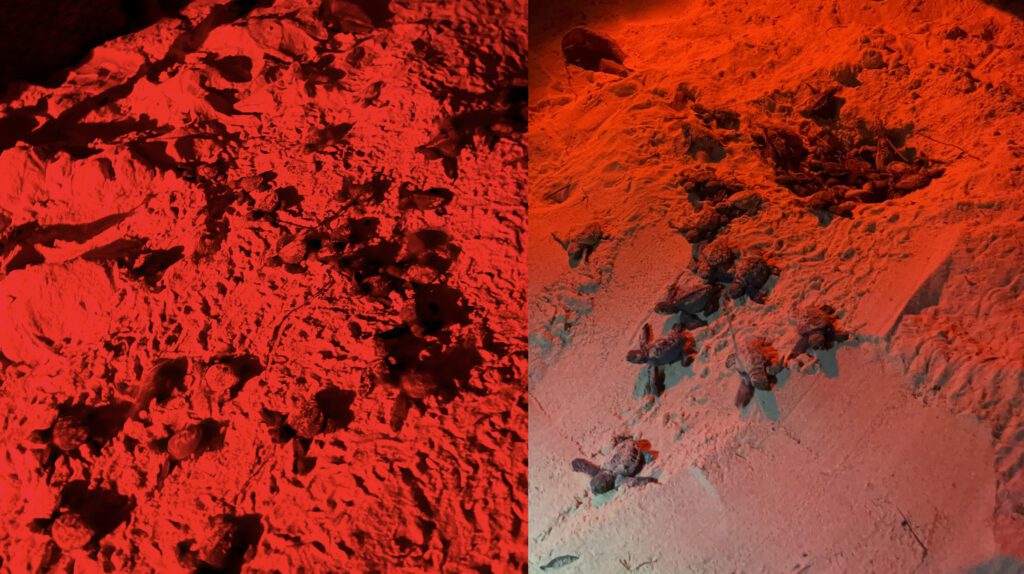
Turtle hatching
Baby hawksbill turtles usually weigh less than 24 g (0.85 oz) and hatch at night after around two months of the eggs being buried in the sand. These newly emergent hatchlings are dark colored, with heart-shaped carapaces measuring around 2.5 cm (0.98 in).
They instinctively crawl into the sea, attracted by the reflection of the moon on the water (possibly disrupted by light sources such as street lamps and lights). Did you know that we have had turtles nesting and hatching on the beaches at both Murex Bangka and Murex Manado?
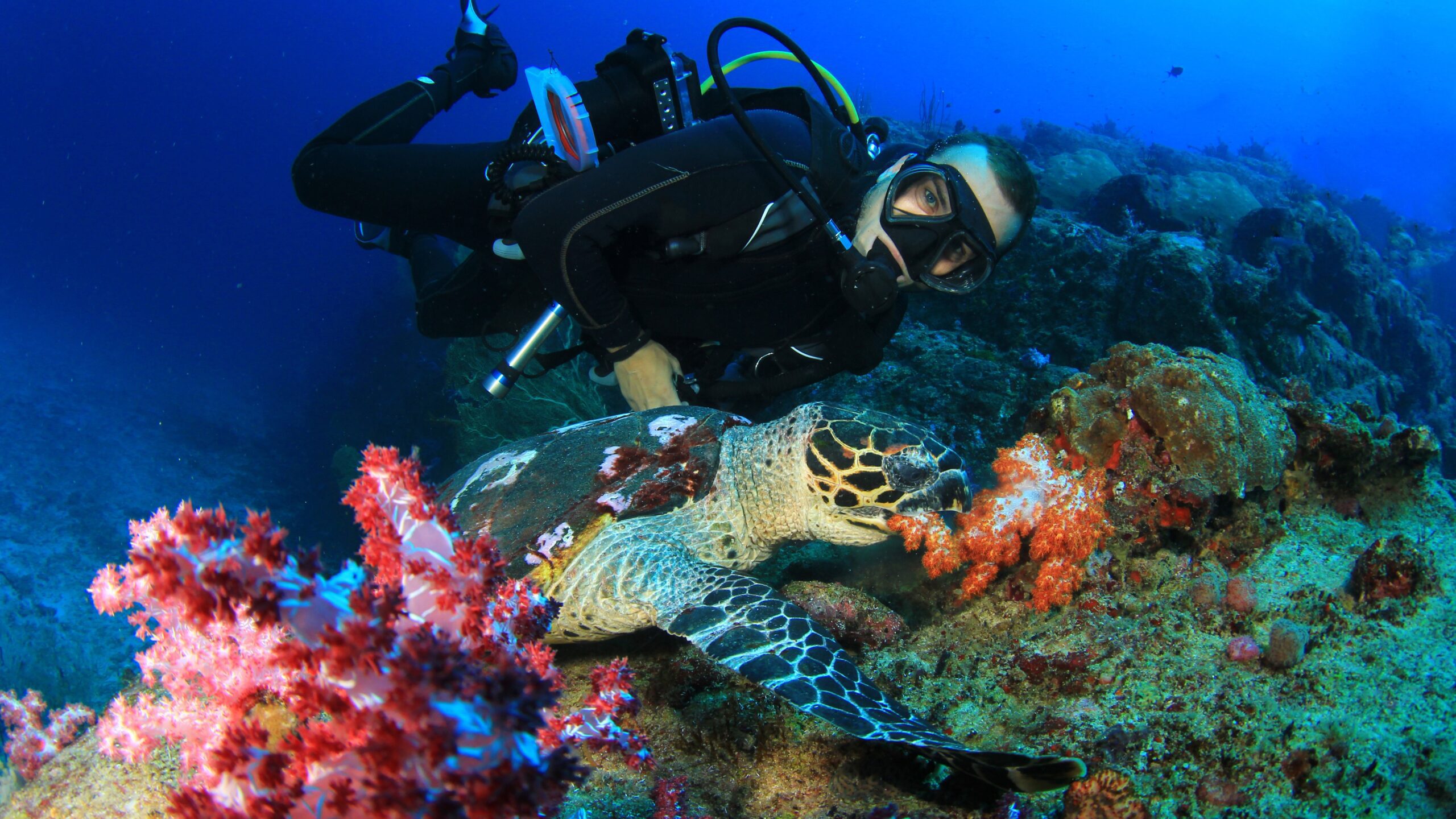
Hawksbill Sea Turtle and Scuba Diver
6. Life phases: Pelagic, benthic, and reproductive
Not much is known in detail about the life phases of hawksbills. Their life phases can be roughly divided into three phases:
- The pelagic phase, from hatching to about 20 cm
- The benthic phase, when the immature turtles inhabit foraging areas
- The reproductive phase, when they reach sexual maturity
The pelagic phase possibly lasts until the turtles reach around 20 cm in length which takes from 1 to 3 years. Hawksbills reach sexual maturity at around 40 cm (2 to 4 years).
7. Solitary life and migratory behavior
Like other sea turtles, hawksbills are solitary for most of their lives and they meet only to mate. They are highly migratory, traveling thousands of miles between nesting and feeding grounds.
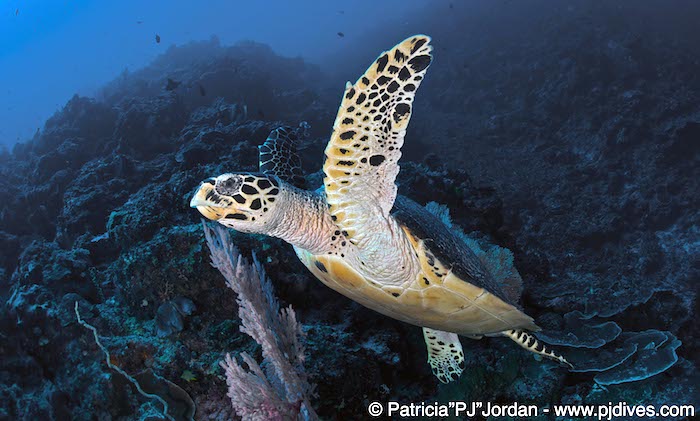
A hawksbill turtle “taking off” from the reef in Bunaken
8. Few predators due to their hard shell
Adult hawksbill turtles impressive carapace or shell, combined with their agile swimming abilities, helps to deter potential threats such as sharks, larger fish species, and other predators. This protective shield serves as a safeguard, allowing hawksbill turtles to roam the ocean with relative peace and freedom.
9. Turtle rescue and release efforts
Did you know that there is a Buddhist temple in Manado which rescues hawksbill (and green sea) turtles and releases them on our Murex Manado House Reef? Find how Turtle rescue and release efforts in Murex Manado happens.
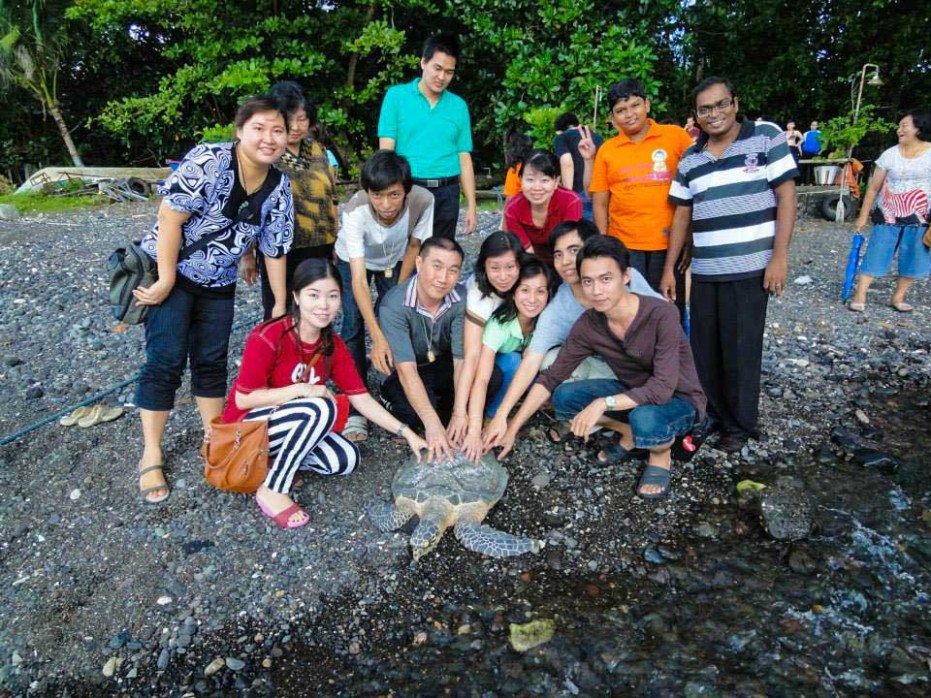
Hawksbill turtle release by our local Buddhist Temple at Murex Manado
10. Habitat preference and popular diving sites
Hawksbills are most commonly found on coral reefs, rocky areas, lagoons and shallow coastal areas. Because hawksbill turtles spend much of their time in shallow water they are often seen by snorkelers and divers.
Snorkeling and diving in the Bunaken Marine Park provides plenty of opportunities for a sighting of this species of turtle. When you are visiting Murex Manado you can see hawksbill turtles all around Bunaken Island but the best sites are Bunaken Timur, Sachiko’s and our beautiful Lekuan sites.
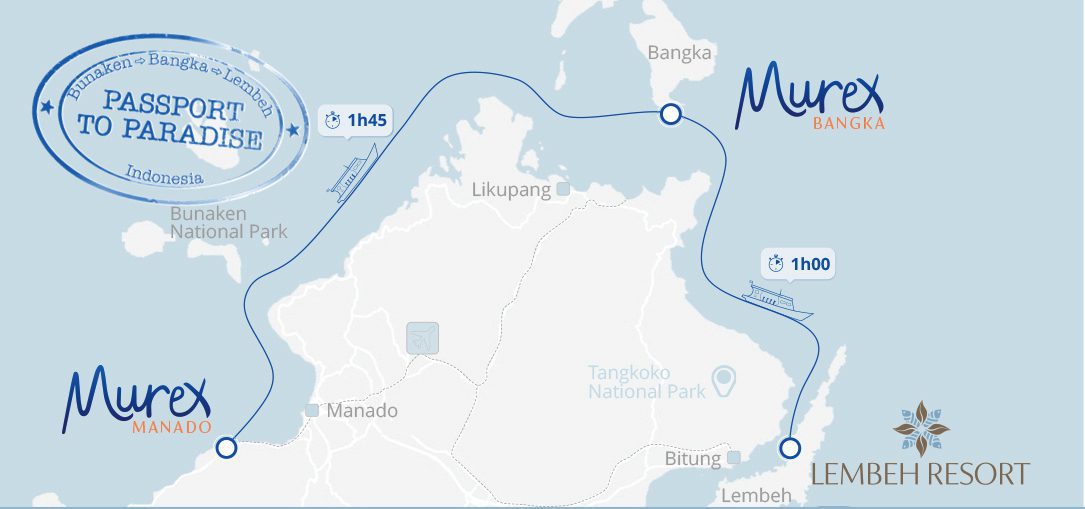
Three distinct destinations brought together by Passport to Paradise
Ready to dive with hawksbill turtles?
Dive with the majestic Hawksbill Turtles and embark on your next exciting underwater adventure in North Sulawesi. Why not take the opportunity to explore even more of this incredible region? Join us for the Passport to Paradise experience, a journey that reveals the beauty of three different locations in one phenomenal journey: Bunaken -> Bangka -> Lembeh.
Dive into the mesmerizing walls of Bunaken, discover the kaleidoscopic coral reefs surrounding Bangka, and witness the famous critters of Lembeh Strait. To reserve your spot or for more information, please contact us at reservations@murexresorts.com. We’re looking forward to sharing this extraordinary diving experience with you.
Discover the details of our Murex Resort rates and secure your place on the unforgettable Passport to Paradise journey.



